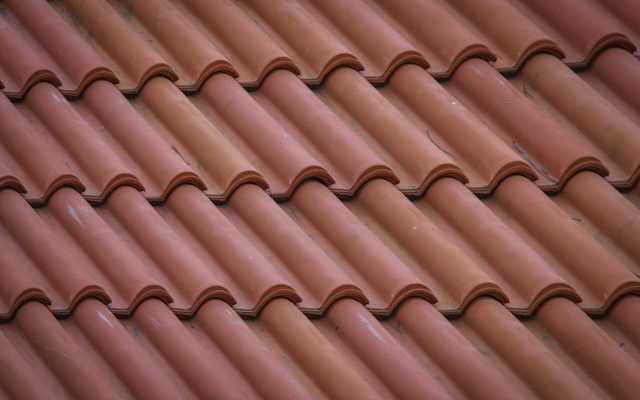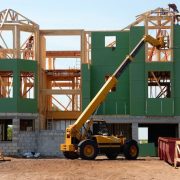When it comes to roofing materials, one size does not fit all. The climate, weather patterns, and environmental factors of your region play a crucial role in determining the most suitable roofing material for your home. From scorching deserts to icy tundra, each geographic area presents unique challenges and considerations that influence the longevity, durability, and efficiency of your roof. This comprehensive guide will explore the best roofing materials for different regions, helping you make an informed decision to protect and enhance your home.
Humid and Hot Climates
For regions characterized by high humidity and hot weather, including areas like Austin, roofing materials that can withstand moisture and resist mold and mildew growth are crucial. Metal roofs, such as aluminum or steel, are also suitable options, providing longevity, corrosion resistance, and reflective properties to reduce heat absorption. Additionally, these areas often experience intense sunlight and strong winds, necessitating materials with UV resistance and superior wind resistance. Clay or concrete tiles are popular choices for these areas, offering excellent durability, thermal insulation, and resistance to moisture and pests.
Temperate and Mild Climates:
Regions with moderate temperatures, mild winters, and occasional rainfall require versatile roofing materials that offer both durability and aesthetic appeal. Asphalt shingles are a popular choice for temperate climates, offering affordability, versatility, and ease of installation. These shingles come in a variety of colors and styles to complement different architectural designs while providing adequate protection against moisture and wind. Wood shakes or shingles are another option for homeowners seeking a natural, rustic look, although they may require regular maintenance to prevent rot and decay in humid environments.
Cold and Snowy Climates:
In areas prone to cold temperatures, heavy snowfall, and ice dams, roofing materials must be able to withstand the weight of snow, resist water infiltration, and provide effective insulation to prevent heat loss. Metal roofing, particularly standing seam panels, is well-suited for cold climates, offering durability, snow shedding capability, and resistance to ice buildup. Asphalt shingles with reinforced underlayment and ice dam protection features are also popular choices, providing reliable performance in snowy conditions. Additionally, slate or synthetic slate tiles offer superior durability and resistance to freeze-thaw cycles, making them ideal for cold climate roofing applications.
Coastal and High-Wind Zones:
Coastal regions and areas prone to hurricanes or high winds require roofing materials that can withstand extreme weather conditions and resist wind uplift. Metal roofing, specifically interlocking panels or standing seam systems, is highly recommended for coastal homes, offering superior wind resistance and durability. Additionally, concrete or clay tiles with reinforced installation methods provide excellent resistance to wind uplift and water penetration. Impact-resistant asphalt shingles or synthetic materials are also suitable choices for coastal properties, offering durability and protection against wind-driven debris.
Desert and Arid Climates:
In arid regions with hot, dry climates and minimal rainfall, roofing materials must be able to withstand extreme temperatures and sun exposure while conserving energy and providing insulation. Metal roofing, particularly light-colored or reflective coatings, is well-suited for desert environments, reflecting sunlight to reduce heat absorption and cooling costs. Additionally, clay or concrete tiles offer natural thermal insulation and fire resistance, making them popular choices for desert homes. Synthetic materials like asphalt shingles with reflective coatings can also provide durability and energy efficiency in arid climates.
Mountainous and High-Elevation Areas:
Mountainous regions and high-elevation areas experience unique challenges such as rapid temperature fluctuations, heavy snowfall, and high winds. Roofing materials must be able to withstand these extreme conditions while providing adequate insulation and moisture resistance. Metal roofing, particularly corrugated panels or snow guards, is well-suited for mountain homes, offering durability, snow shedding capability, and resistance to ice dams. Additionally, asphalt shingles with reinforced underlayment and snow retention systems provide reliable performance in snowy climates. Slate or synthetic slate tiles are also suitable options for mountainous regions, offering durability and resistance to freeze-thaw cycles.
Conclusion
In conclusion, choosing the right roofing material for your region is essential to ensure the long-term performance, durability, and efficiency of your home’s roof. By considering factors such as climate, weather patterns, and environmental conditions, you can select a roofing material that offers optimal protection and enhances the aesthetic appeal of your property. Whether you live in a tropical paradise, arid desert, temperate zone, snowy landscape, coastal enclave, or mountain retreat, there’s a roofing material suited to your specific needs and preferences. Invest in quality roofing materials that provide peace of mind and protect your home for years to come.




















